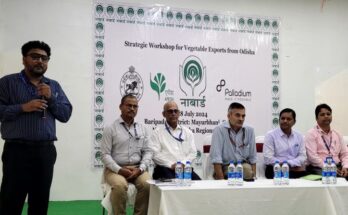Rome/Nairobi/New York – At the global event marking today the first International Day of Awareness of Food Loss and Waste, the Food and Agriculture Organization of the United Nations (FAO), the UN Environment Programme (UNEP) and their partners urged everyone to do more to reduce food loss and waste or risk an even greater drop in food security and natural resources.
Some 690 million people today are hungry and three billion cannot afford a healthy diet. Hunger has been on the rise for the past five years, and the COVID-19 pandemic is threatening the food and nutrition security of up to an additional 132 million of people. On top of that, we are faced with an ecosystem decline and the consequences of climate change, FAO said.
Yet, food continues to be lost and wasted. This year we have witnessed an increase in food loss and waste as a result of movement and transport restrictions due to the pandemic.
According to FAO, COVID-19 aside, however, each year about 14 percent of the world’s food is lost before even reaching the market. Food loss is valued at $400 billion annually – about the GDP of Austria. On top of this comes food waste, for which new estimates are coming out early 2021. When it comes to environmental impact, food loss and waste generate eight percent of global greenhouse gas emissions.
Food loss occurs from farm up to and excluding retail, whilst food waste occurs at retail, food service and household level. Causes range from poor handling, inadequate transport or storage, lack of cold chain capacity, extreme weather conditions to cosmetic standards, and a lack of planning and cooking skills among consumers.
Simply put, reducing food lost or wasted means more food for all, less greenhouse gas emissions, less pressure on environment, and increased productivity and economic growth.
Innovation, technologies and behavioural change – key to reduce food loss and waste
“Food loss and waste is a big challenge of our time,” said FAO Director-General QU Dongyu, urging for stronger partnerships, more public and private investments in training for smallholder farmers, technology and innovation” to step up the fight against food loss and waste as “our planet is a small boat in the universe.”
“Innovative post-harvest treatment, digital agriculture and food systems and re-modelling market channels offer huge potential to tackle the challenges of food loss and waste. We have just built a partnership with IBM, Microsoft and the Vatican to empower Artificial Intelligence in all these areas,” added Qu.
Inger Andersen, Executive Director of UNEP, encouraged governments to make food loss and waste part of national climate strategies.
“Only 11 countries have so far included food loss in their Nationally Determined Contributions. None of them included food waste. By including food loss and waste and sustainable diets in revised climate plans, policy-makers can improve their mitigation and adaptation from food systems by as much as 25 percent,” said Andersen.
Calling food loss and waste “an ethical outrage” given that so many people go hungry, António Guterres, Secretary-General, United Nations in a message sent in support of the Day, urged everyone to play their part in tackling this issue – from countries setting a reduction target and measuring their food loss and waste and policy action in this area being included in climate plans under the Paris Agreement to businesses taking a similar approach and individuals shopping carefully, storing food correctly, and using leftovers.
The need for everyone to come together and step up efforts to reduce food loss and waste, including through innovation, technologies and education, to shift behavioural norms away from waste, to measure and track progress, as well as work towards increasing the availability of food and reducing the environmental footprint of agricultural production – topics to be explored in depth at the 2021 Food System Summit – were echoed by speakers and panel discussion participants from the UN, European Commission, private and public sectors, agriculture ministries of developing and developed countries, farmers’, markets’ and consumers’ organisations and associations, academia and chefs.
Solutions to reduce food loss and waste
Solutions to stem food loss and waste include: good data to know where in the value chain the major hot spots of food loss and waste are; applying innovation – for example, e-commerce platforms for marketing or retractable mobile food processing systems; government incentives to bolster private sector food loss and waste action and collaboration across supply chains; investments in training, technology and innovation, including for small-scale producers; better food packaging and relaxing on regulations and standards on aesthetic requirements for fruit and vegetables; behaviours that value and make the most of food at home; redistributing safe surplus food to those in need through food banks; facilitating farmers’ access to consumers and shorter value chains through farmers’ markets and rural-urban linkages; and investing more to strengthen infrastructure and logistics, including sustainable cold chains and cooling technologies.
In many countries, a large proportion of produce is lost during transportation. To address this, FAO has introduced improved, sustainable bulk packaging (in the form of stackable and nestable plastic crates), along with good post-harvest management practice, to transport fresh produce in a number of Southern and South-eastern Asian countries. According to FAO report, The State of Food and Agriculture 2019, the use of crates during transport has reduced losses of vegetables and fruits by up to 87 percent. Where crates replaced single-use plastic bags, this has also brought environmental benefits.
The UK Success Story
UNEP, together with high-level coalition Champions 12.3, has developed a Target-Measure-Act approach to food loss and waste reduction. The United Kingdom, a pioneer of this approach, has achieved a 27 percent reduction in post-farm-gate food loss and waste per capita by 2018 relative to its 2007 baseline, making it the first country in the world to have advanced more than halfway towards the achievement of SDG 12.3. Good data has helped the UK to make the case for action, together with an effective public-private partnership to facilitate cross supply chain collaboration, leveraging innovation in food promotion, labelling, and design, and a long-standing public behaviour change campaign, with re-doubled efforts and impacts on household food behaviours during the global pandemic. Several companies including Tesco (Central Europe), Campbell, and Arla Foods have achieved food loss and waste reductions of more than 25 percent-suggesting that achieving the target is possible for companies, too.
A new African Centre of Excellence for sustainable cooling and cold chain based in Rwanda is helping get farmers’ produce to market quickly and efficiently – reducing food waste, boosting profits and creating jobs.
Elsewhere, young entrepreneurs like Isaac Sesi – who spoke at the event – also fight food loss with innovation. Sesi and the Feed the Future Innovation Lab for the Reduction of Post-Harvest Loss at Kansas State University are providing farmers in Ghana – Isaac’s home country – with an affordable moisture meter called GrainMate, which measures the moisture content of maize and other grains, helping farmers ensure the grains are sufficiently dried and tackle the main cause of post-harvest loss in grain – insufficient drying before storage, which creates conditions for fungal growth, contamination and insect infestation.
Food loss and waste – facts and figures
- In terms of greenhouse gas (GHG) emissions, the food that is lost is associated with around 1.5 gigatonnes of CO2 equivalent every year.
- UNEP will publish new country level food waste estimates at retail, food service and household level in its Food Waste Index report, early in 2021, and a common methodology for food waste measurement at national level on World Food Day, October 16th 2020.
- Studies commissioned by FAO before the pandemic estimate that on-farm losses in sub-Saharan Africa for fruits and vegetables are up to 50 percent, the highest in the world. For cereals and pulses, the on-farm losses are up to 18 percent, equal highest in the world with parts of Asia.
- Reducing food loss early in the supply chain – on the farm – in countries with high levels of food insecurity is likely to yield the strongest positive result for greater food security.
- Many countries deal with the growing demand for food by increasing agricultural production without reducing food loss and waste, and, thereby, exacerbating pressure on environment and increasingly scarce natural resources.




